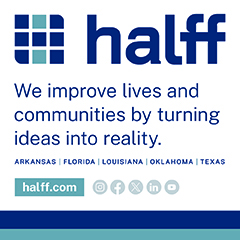The Tampa Hillsborough Expressway Authority (THEA) in Florida is implementing a transformative $752 million transportation plan for fiscal years 2026 through 2031. The plan is a cornerstone of the city of Tampa Bay’s commitment to developing a transportation infrastructure network that prioritizes dynamic projects designed to spearhead community connectivity through innovation.
Of the allocated funding, THEA will invest $692 million into transportation infrastructure projects, pushing strategic planning to ensure the authority’s efforts have the greatest, most efficient impacts for the region’s long-term benefit, according to THEA officials.
More than half of the Work Plan’s budget will go toward the South Selmon Capacity Project, an $392.1 million initiative to reduce congestion and enhance safety along one of the city’s most trafficked corridors. The project will widen the roadway to six lanes, with three going in each direction, covering a 4.5-mile stretch. Additional project components include installing traffic signals, sidewalks, crosswalks and noise walls. The city will also enhance underpasses, choosing to redesign one into a dog park and community gathering space.
The work plan injects $80.6 million toward the Whiting Street Improvement project. The project vision will extend Whiting Street to enhance flow and safety, requiring the reconfiguration and relocation of two exits. The city will build or reconstruct ramps, additional travel lanes and intersections along the route. Additional work will incorporate multimodal features to enhance safety, including traffic lights, crosswalks and dedicated bicycle lanes.
Tampa Bay will invest $47.7 million to update Intelligent Transportation System (ITS) infrastructure along the East and West Selmon corridors. As part of the city’s efforts to modernize its roadways, the project will offer grounding mitigation for pier uplight units and prioritize the installation of ITS technologies, including:
- Closed-Circuit Television.
- Microwave Vehicle Detection.
- Roadside Units.
- Dynamic Message Signs.
The city will also replace the Roadside Toll Collection System (RTCS), investing $31.9 million to deploy modernized toll collection technology. The replacement units will integrate National Interoperability solutions, enabling the system to receive and transmit transactions to the authority’s Operational Back Office System (OBOS). In addition, OBOS is slated for replacement, allocated $8.5 million to succeed the current aged system.
Photo by Edgar C from Pexels













